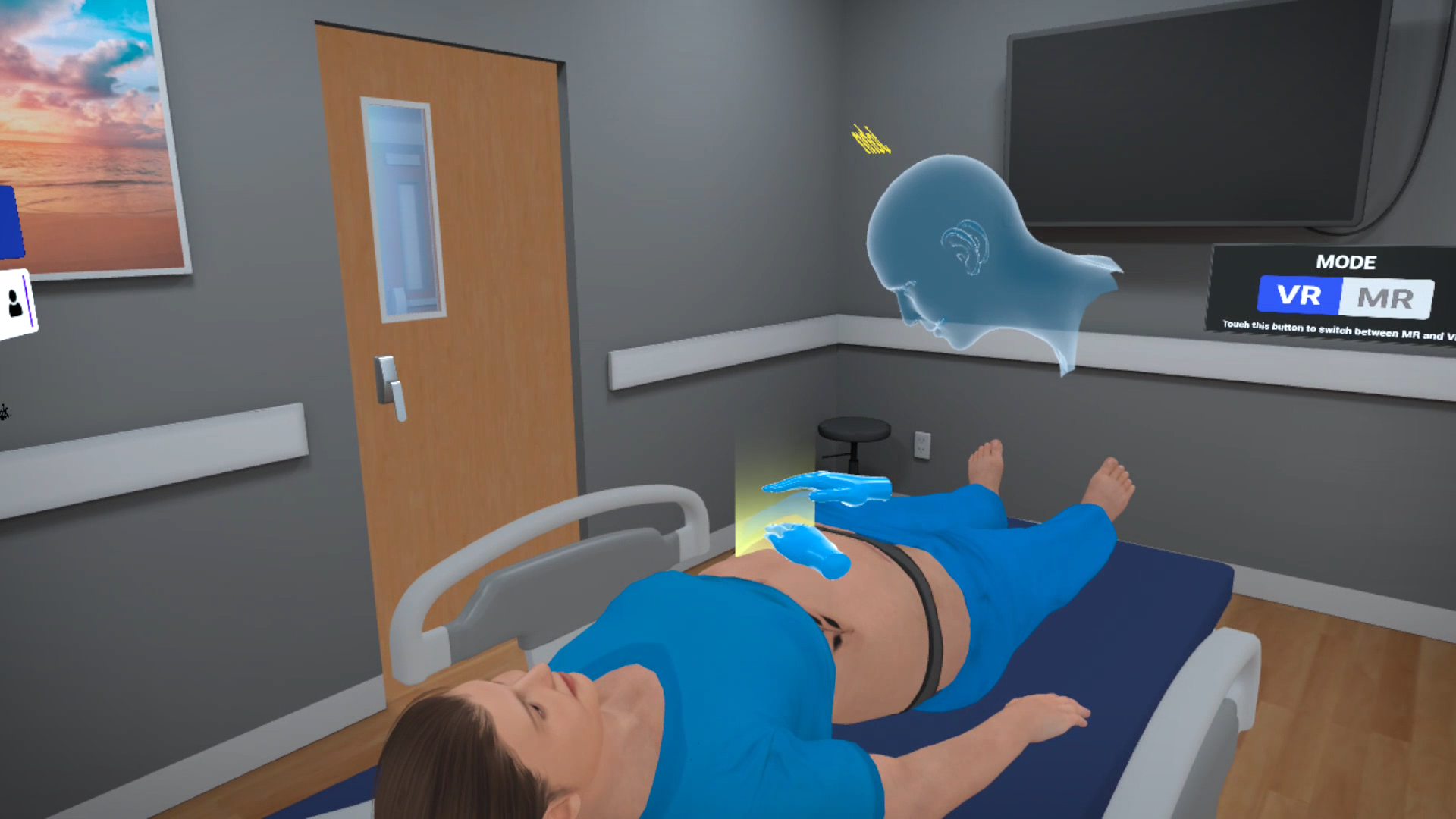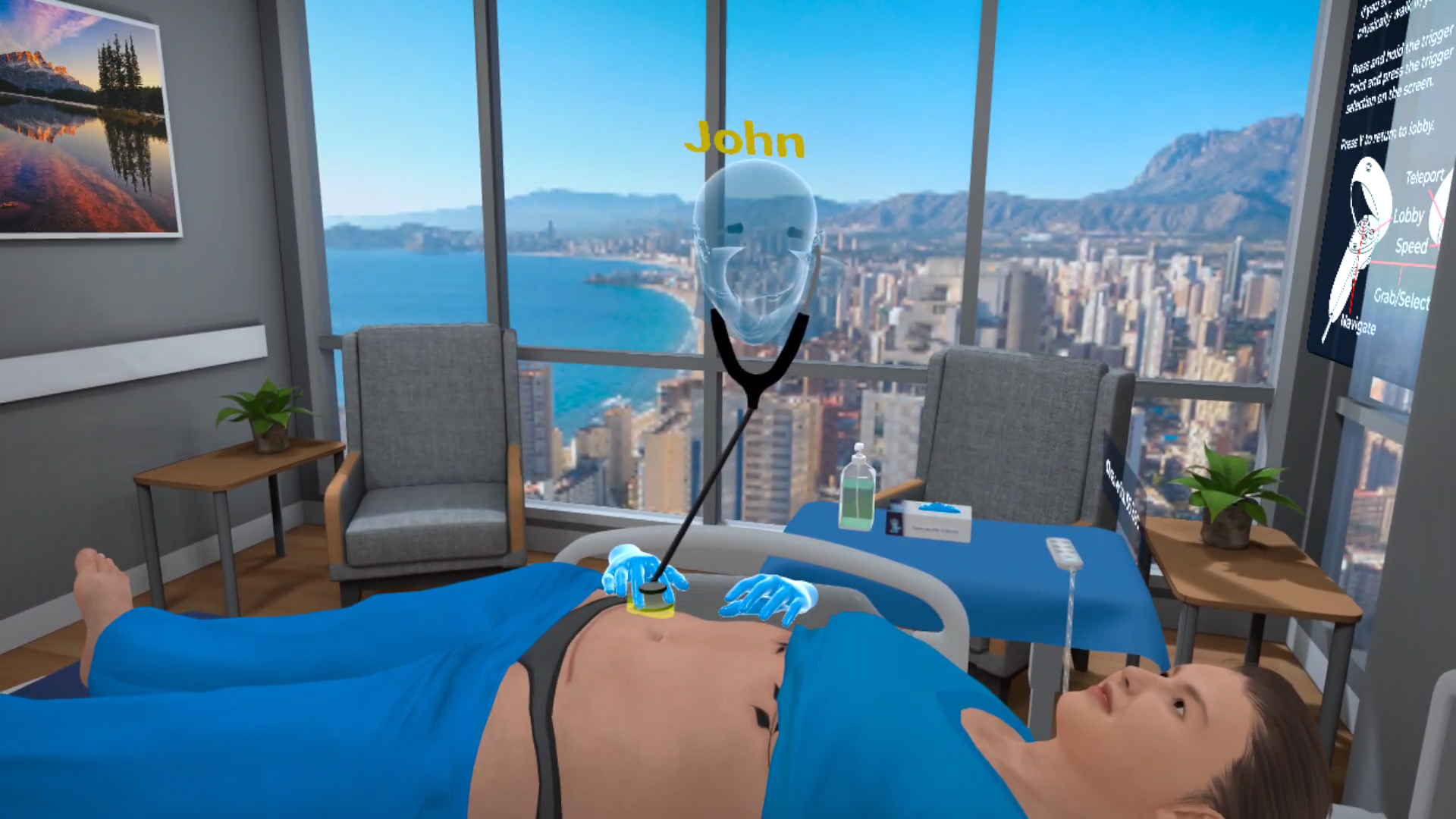Abdominal Assessment
Thirty-four-year-old Brenda Herring is at the hospital for an abdominal assessment. She is overweight and has recently been diagnosed with type II diabetes.
This VR simulation for Abdominal Assessment is designed to provide healthcare practitioners practice in conducting an assessment in safe and controlled environment with a virtual patient. They will be using the techniques of inspecting, auscultating, percussing and palpating. With both training and assessment modes, learners can perform the procedure and assess themselves on their performance.
- Demonstrating standard technique of inspecting and auscultating the abdomen
- Applying clinically approved technique of auscultating abdominal vascular sounds
- Demonstrating standard technique of percussing and palpating the abdomen

- National Institute of Diabetes and Digestive and Kidney Diseases (NIDDK).
- American College of Gastroenterology (ACG).
Customize Your Program
Get rid of the editor. Adopt in-VR customization.
MedVR Education is bringing to you in-VR customization that will enable you to customize your procedural simulations by making selections from a range of feature choices.
- Select patient from a diverse background
- Choose preferred virtual environment
- Select equipment used in the procedure
- Modify difficulty level of the assessment mode
- …..many more to come

 Multi-playerSessions
Multi-playerSessions Physics-based Interactions
Physics-based Interactions
Core Skills Training

Performing Abdominal Assessment
As a part of this Abdominal Assessment procedure, the learner will begin by confirming the patient’s identity and enquiring about the patient’s bowel movement, abdominal pains if any, and the nature of the stool. After performing hand hygiene, the learner will educate the patient on the examination procedure and grab a stethoscope to initiate the procedure. This will include a detailed assessment of four quadrants of the abdomen, the liver and the spleen. The procedure will be completed after all the assessments are performed and the patient has been educated on the results. All necessary affordances are provided to complete the procedure with efficiency.
Training
With prompts, guidance and affordances learners are hand-held through the process to practice the procedure in a virtual environment with a virtual patient.
- Photorealistic virtual environment
- Physics-based interactions
- Detailed instructions
- Adequate affordances to assist in task completion

Assessment
Test acquired skills to perform the procedures from start to finish without prompts. An incorrect step will take the learner back to the start to start afresh.
- Live scoring
- Instant feedback
- Adequate affordances for efficient performance
- Time tracking to monitor activity completion







